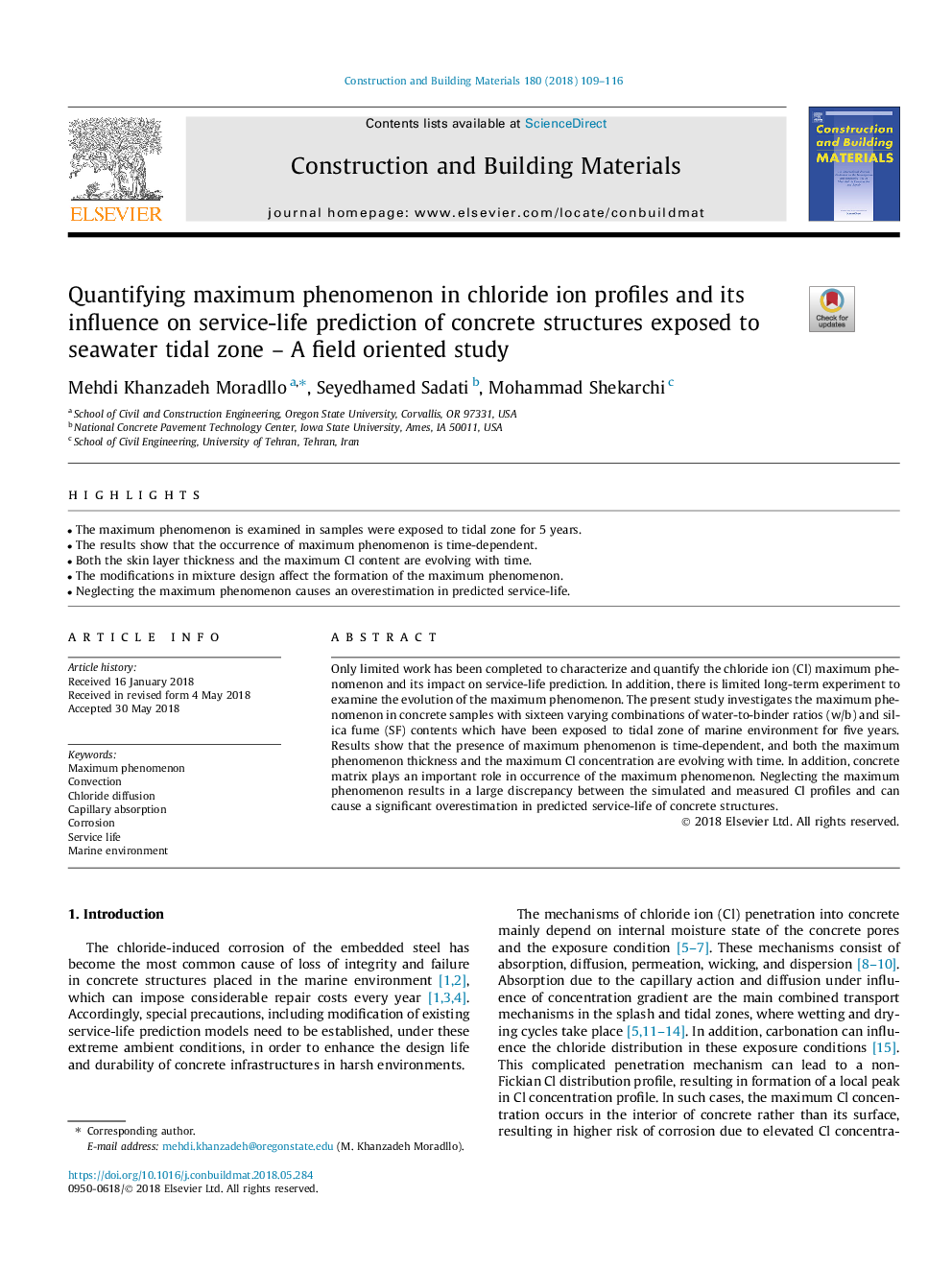| Article ID | Journal | Published Year | Pages | File Type |
|---|---|---|---|---|
| 6712450 | Construction and Building Materials | 2018 | 8 Pages |
Abstract
Only limited work has been completed to characterize and quantify the chloride ion (Cl) maximum phenomenon and its impact on service-life prediction. In addition, there is limited long-term experiment to examine the evolution of the maximum phenomenon. The present study investigates the maximum phenomenon in concrete samples with sixteen varying combinations of water-to-binder ratios (w/b) and silica fume (SF) contents which have been exposed to tidal zone of marine environment for five years. Results show that the presence of maximum phenomenon is time-dependent, and both the maximum phenomenon thickness and the maximum Cl concentration are evolving with time. In addition, concrete matrix plays an important role in occurrence of the maximum phenomenon. Neglecting the maximum phenomenon results in a large discrepancy between the simulated and measured Cl profiles and can cause a significant overestimation in predicted service-life of concrete structures.
Related Topics
Physical Sciences and Engineering
Engineering
Civil and Structural Engineering
Authors
Mehdi Khanzadeh Moradllo, Seyedhamed Sadati, Mohammad Shekarchi,
